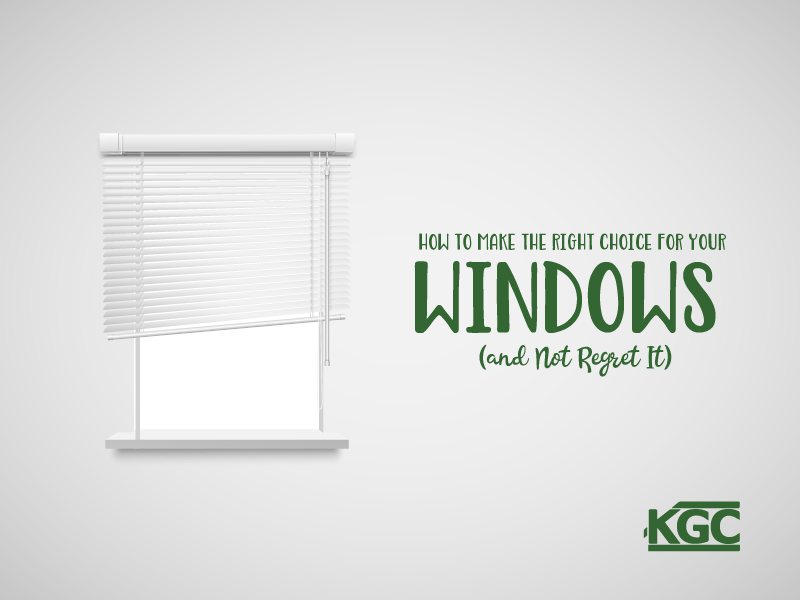Not for you, the heartache of window renovation woes. In fact, you’re so well prepared with these tips that fitting in new windows or replacing your old ones will be a breeze.
Drafty puns aside, changing your windows can be the best decision you ever make or one you’ll live to regret for decades. Follow these tips to make the right choice!
1. Replace or repair?
Have the years and seasons taken a toll on your windows? You may want to replace them, but wait – you may be able to get away with repairs instead.
- Check for signs of water damage, or softness in the wood. Water damage can be more serious than it sounds, because water can leak into the walls. But make sure the leak is coming from the window, and not caused by blocked gutters that force water down to the window.
- Condensation inside the panes is usually a bad sign, and an indication that it’s time to change your windows.
- With small cracks or broken glass, the sash can sometimes be replaced instead of changing the entire window, and this could be covered by your guarantee.
- Drafty windows can be better insulated with weather stripping and new caulking, and window sashes that stick can be lubricated so they slide better on the channel.
Still, many people replace their windows to make their homes more energy efficient, change the window styles, or increase the value of their house.
2. Match Form to Function
Avoid window woes by really taking the time to think about how and where you want to use your windows.
Your windows should be durable, functional, and beautiful, for a start. Hard to get all three? Maybe, but that’s what you should be looking for.
Think of function first. Top-to-bottom windows may sound alluring, but if you live in a cottage in a cold climate, it’s not only going to look out of place; it could also cause a serious spike in your energy bills.
Windows in a bathroom, for example, need to open well and be frosted, while windows to keep the cold from the bedroom may be different in form and function than beautiful large windows that have aesthetic appeal in your kitchen and living room.
Is security important to you? Then you need to look at the locks of the window, how high from the floor it can be installed, and the glazing and strength of the glass.
3. Insulate from the top down
New windows should keep your house warm, right? Well, that’s really only partly true. New window installations can certainly help keep the heat in, but improving the thermal performance of your home has to happen from the top down.
So before you change your windows, invest in weatherproofing and insulating your roof, attic, and hot water cylinders.
Don’t glaze over this
Wondered what all the single, double, and triple glazing window glass is all about?
Well, it’s not really about the glass at all. It’s about the distance between the panes. What makes windows more or less insulating is how much gas is between the two panes. Double or triple glazing keeps more warm air in, reduces the condensation on the inside of windows, and is better at keeping noise out (if you live on a busy or noisy street).
- Single-panes are less common these days, and should only be used for homes in very warm regions.
- Double-pane glass windows are more suitable for cold climates and are the industry standard.
- Triple glazing offers a higher level of protection and insulation from the elements, and while it may be more expensive initially, it’ll offer more energy savings in the long run.
- Toned or tinted glass, or low emissivity (Low-E) glass can help keep more heat in.
- Impact-resistant glass might not offer much by way of insulation, but in regions with severe storms or extreme weather, it can add an extra layer of protection.
4. Frame this window
The type of window frame you choose can be important, and each has its advantages and disadvantages.
- Wood/Timber
Long-lasting and beautiful to look at; but can be more expensive and requires maintenance over time (heat loss and paint). - Aluminum
Chic and modern, can be painted, and easy to maintain; but not always energy efficient. - Vinyl
Inexpensive, good for insulation, and very versatile when it comes to style (can be made to look like wood); but not as durable as other options (but popular with homeowners). - Fiberglass
Low maintenance, a great insulator, and weather resistant; but can be expensive and not very stylish. - Frameless (structural) glass
Can look stunning for top-to-bottom windows (e.g., in conservatories) and offer unobstructed view; but can be expensive to install and not very good for insulation.
In addition, if you live in colder climates, then look for:
- A high R-value (heat loss prevention)
- A low U-value (transfer of heat)
- High solar gain (sunlight heats the room through the window) but in summer this will mean more air conditioning
- Low wind resistance numbers (how well the seal performs)

